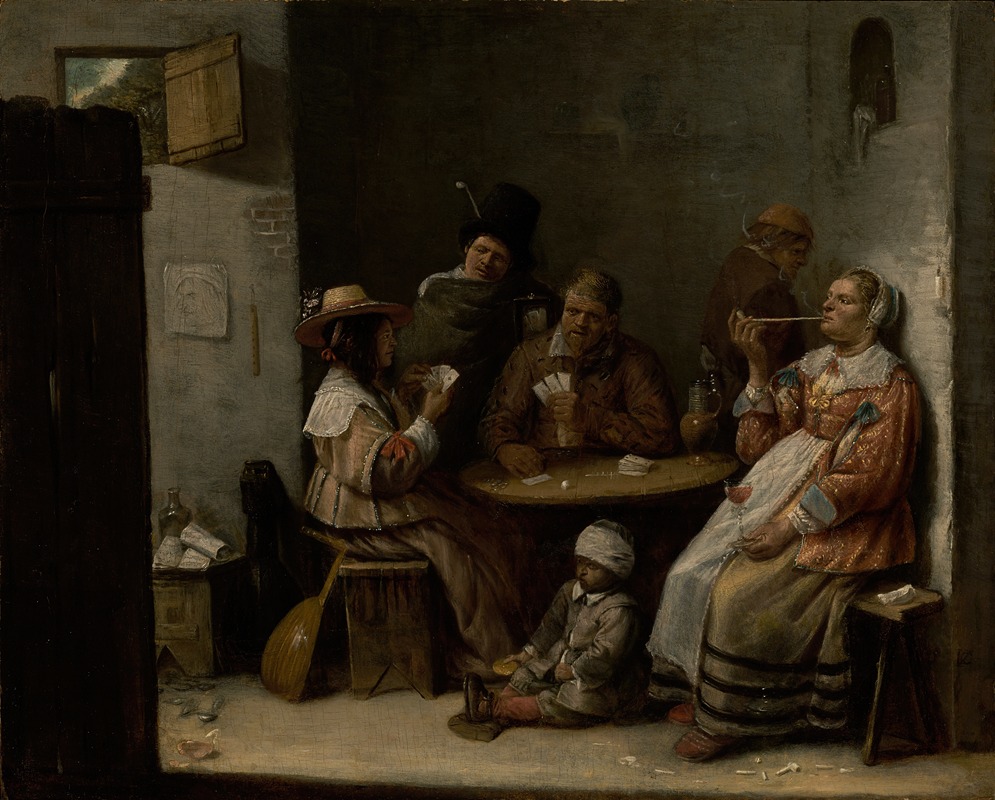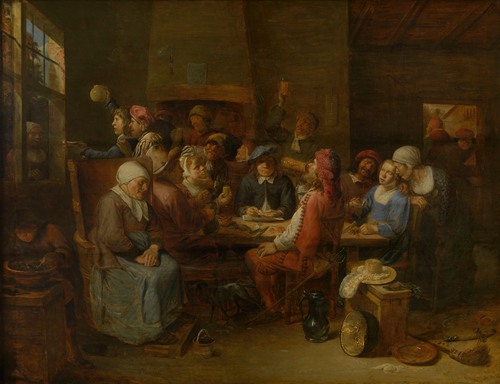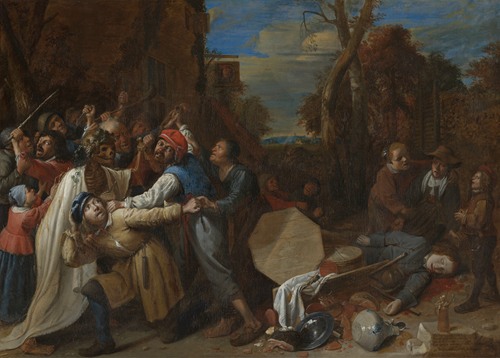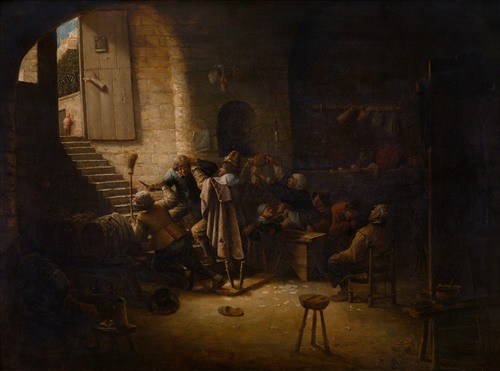
Joos van Craesbeeck was a Flemish baker and a painter who played an important role in the development of Flemish genre painting in the mid-17th century through his tavern scenes and dissolute portraits. His genre scenes depict low-life figures as well as scenes of middle-class people. He created a few religiously themed compositions.
Joos van Craesbeeck was born in Neerlinter (now a village in Flemish Brabant, Belgium). His father was also called Joos and is believed to have been a baker. His mother's name was Gertruid van Callenborch. In 1630 or 1631 Joos van Craesbeeck married Johanna Tielens. His wife's father was a baker but her family also counted artists among its members: the landscape painter Jan Tielens was her uncle while two of her uncles on her mother's side were the sculptors Melchior and Caspar Grison.
The Tielens family was also responsible for the operation of the bakery in Antwerp Citadel. When the painter Adriaen Brouwer was imprisoned in the citadel, van Craesbeeck likely got to know him. Based on information provided by contemporary Flemish biographer Cornelis de Bie in his book Het Gulden Cabinet van Craesbeeck is believed to have become Brouwer's pupil and best friend. Their relationship was described by de Bie as 'Soo d’oude songhen, soo pypen de jonghen' (As the old ones sang, so the young ones chirp'). The stylistic similarities of van Craesbeeck's early work with that of Brouwer seems to corroborate such pupilage.
Van Craesbeeck became a master in Antwerp's Guild of Saint Luke in 1633–1634 as a baker and painter. In 1637 he was widowed and obtained an inheritance. That year he is recorded as the owner of a new house with a bakery in Antwerp. From this time onwards he was able to dedicate himself full-time to painting.
The movements of van Craesbeek between 1637 and 1651, the year he became master in the Brussels Guild of Saint Luke are not clear. It is likely that his move to Brussels was linked to that of David Teniers the Younger who settled in Brussels on 7 September 1650. In 1653, Adriaen Rombouts was his pupil.
The death date of van Craesbeeck is not known with certainty but it must be situated between 1660 and 1661 since in 1660 a Lucas Viters was registered as his pupil at the Guild and a year later Cornelis de Bie reported him as deceased.






